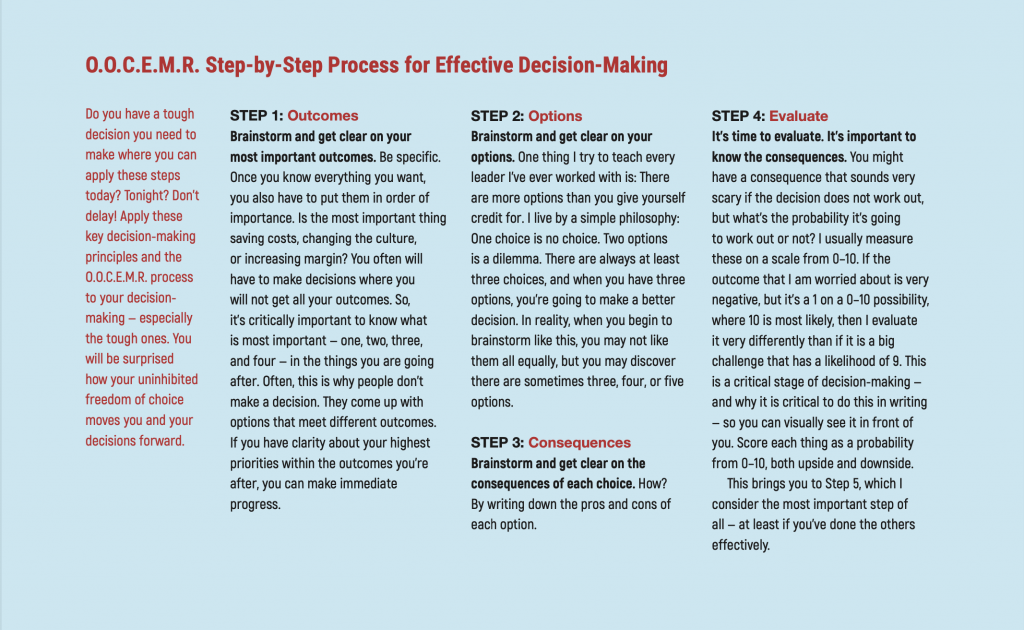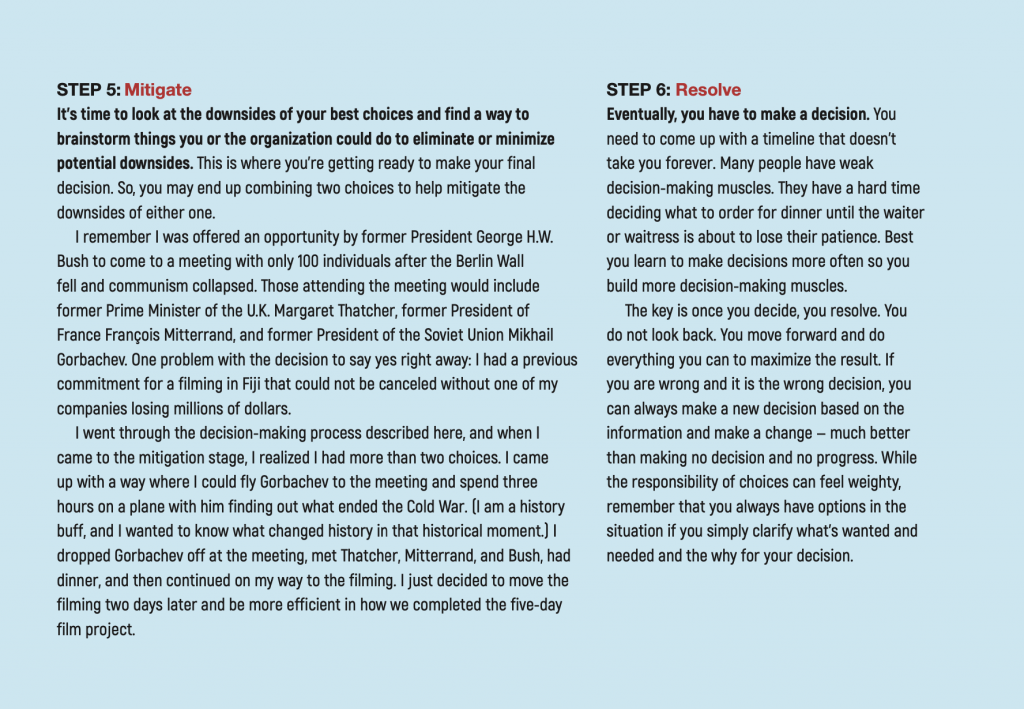By Tony Robbins
Great leaders are great decision-makers. Anyone can make easy decisions with obvious outcomes, but what makes somebody a really effective leader is their capacity to make tough decisions. You know what I’m talking about. The decisions where there is tremendous uncertainty; where you are trying to make the right choice, but you can’t know for sure what it is. Sometimes, it’s about making a choice so you can move the ball forward, find out whether it is the right choice or not, and adapt accordingly.
Life is filled with choices. Real leaders understand that to move things forward, they must make tough decisions. At times, the fear of making the wrong decisions grips us so tightly we opt for indecision, allowing the fear of failure to immobilize us and impede our progress. To break the cycle, leaders can adopt simple principles and processes that I — and many of the executives I coach — rely on. These tools are simple, but practical steps for making those necessary tough decisions. Let’s explore four of the simple principles I adhere to when making challenging decisions.
All decision-making should be done in writing.
If you attempt to do everything in your head, your brain will often end up looping over the same conflicting thoughts. Instead of getting resolved, every possible new idea can create more stress because your mind keeps comparing it back to the first thought. What can break this pattern is the use of a visual element. Remember the idea that a picture is worth a thousand words.
Take a moment to jot down your thoughts about the decision you are grappling with, your desires, and your concerns. Frequently, what seems intricate in our minds becomes remarkably clear and more straightforward when on paper.
Be clear about what you want and/or what the organization wants and needs.
The foundation of exceptional decision-making lies in clarity. To make effective choices, you must first gain crystal-clear clarity about your and your organization’s goals, values, and priorities. Ask yourself: What is the ultimate outcome that I am after through this decision?
This will provide clarity. Clarity is power. When you know what you want (your outcome) and your why (your purpose), decision-making becomes simplified.
Decisions are made on probability.
No one has a crystal ball to tell them with 100% certainty they’ve made the right decisions. It’s about taking inventory of the information available and making the best choice possible. Again, leaders are decision-makers, and they will often have to step into their decisions without total certainty that it’s going to work out. This is what sets them apart from everyone else. They’re willing to take action when everyone else is paralyzed by uncertainty.
Often, tough decisions are less about making the “right” choice and more about making a choice that can move the ball forward and discovering if it’s right or not. With indecision, we will never know what is right. If you wait to have all the information necessary to make a decision, the opportunity that the decision offered is usually gone, and you are living life like the average person versus the leader you’re meant to be. If you make a decision that turns out to be wrong or not the best choice, you can change things. The important part is making a decision to start with.
All decision-making is a clarification of what you and your organization value most.
Each decision we make should point to our values. It can be a tough choice you’re making, but if it aligns with what matters most to you and the organization, you are propelling yourself in the right direction.
There’s nothing worse than making a decision based on fear rather than what feels right in your heart. When faced with tough decisions, don’t let your limiting beliefs trap you into fear-based decision-making. My core belief is that a decision made from fear is almost always the wrong decision. Thoughts like “I’m worried this won’t work out because …” or “I don’t want to try this because …” need to be confronted. The easiest way is by expanding your options and exploring alternative choices or paths.
Seek out diverse perspectives, gather information quickly, and challenge your assumptions. By doing this, you can open the door to innovative solutions and unforeseen opportunities. Once you have your mind in the right place and all the information gathered, you need a logical and repeatable process to get those decisions made and you need a deadline. Otherwise, you’ll get lost in paralysis by analysis.






































